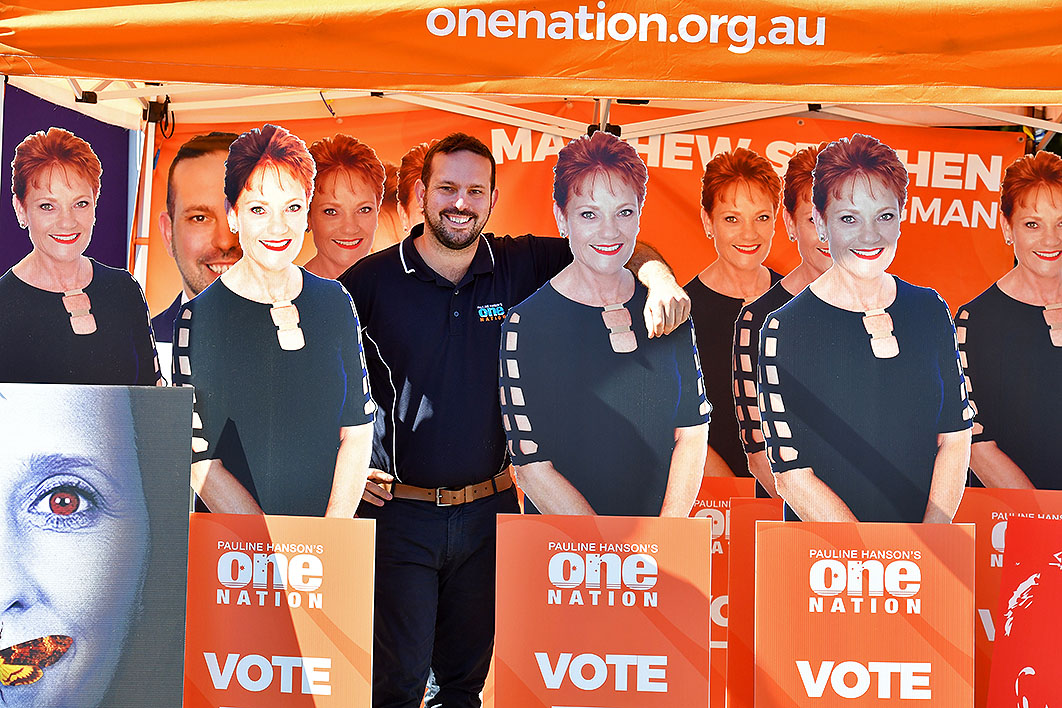When voters in Longman (Queensland) and Braddon (Tasmania) cast their ballots two years ago, they behaved like the rest of the country. The majority — still a majority, though shrinking — voted Labor or Liberal/National because that’s what they always do, at least federally. (Some one-sided state results earlier this decade necessitate that last qualification.)
The remainder were driven by a range of motivations — a small minority because of their feelings about the local Liberal member and a tinier number because they liked or disliked the Labor candidate (who was largely unknown in both seats).
In Longman, preference allocations, the importance of which not all voters fully understand, were decisive because that count was so close. Not every person who delivered that wafer-thin victory to Susan Lamb would know, even today, that he or she was one of those Labor voters; some would simply know that they voted One Nation and allocated preferences as the card instructed.
But overall, election 2016 was about who people wanted to form government.
Saturday 28 July will not be like that. The party diehards will vote Labor or Liberal, the rest will be driven by whatever happens to drift through the ether. By-elections are not about who will form government; they end up being (at least for the swingers) about other things, and that’s why the characterisation of these as a “dry run” or “test case” for the upcoming election doesn’t work.
The reliable old “pox on both their houses” seems to be the message coming through in journos’ vox pops — particularly from Longman — and it was this that drove One Nation’s opinion poll support into the high teens.
But in a surprise development, as they say, leader Pauline Hanson decided it was a good time to hop on an Irish cruise; even more bizarrely, the party replaced her with fifty cardboard cut-outs. “If you can’t have the real person on the day let’s have the identity of the real person, it’s a life-size cut-out. They look pretty good,” the Australian quotes the party state leader as saying. “She will be at every booth. Come and have a selfie with Pauline.”
One Nation will almost certainly perform below poll-driven expectations in Longman, not just because of Pauline’s adventures, but because it (like the Greens, and all minor parties when they’re included in the pollsters’ initial party list) usually does. (When their names are not read out, on the other hand, surveys tend to understate minor parties’ support.)
The betting markets favour Labor in Braddon and the Liberal National Party in Longman. (They greatly favour Centre Alliance’s Rebekha Sharkie over in Mayo, South Australia, and Labor wins are seen as faits accomplis in Perth and Fremantle, Western Australia.) Betting markets reflect general expectations, which are usually right about general election outcomes, though sometimes wrong. On individual seats, they’re hit-and-miss, like the opinion polls.
By-elections usually swing to federal oppositions if they’re running, but not always, and the identity of the state government might be relevant, as it is at general elections. (Calculating average by-election swings by that particular binary is now on my to-do list.) If that is relevant, then it assists the LNP in Longman and Labor in Braddon.
The “how long since a federal government won a seat from the opposition at a by-election?” question (answer: ninety-eight years ago) is a tad facile. The better one involves the swing required, and that produces a lower hurdle in Longman.
Tony Abbott’s one and only by-election as prime minister, in Griffith, Queensland, in 2014, saw a 1.25 per cent swing to the government. If the Coalition can replicate that in the Queensland seat tomorrow, Big Trev Ruthenberg goes to Canberra.
The by-election results won’t really tell us much about the likely next general election outcome. But because so many journalists and party insiders are convinced they will, Saturday’s outcomes in Longman and Braddon will matter a lot for the security of both major-party leaders.
And that’s why these by-elections matter.
Friday afternoon update: I should have noted that, as in Bennelong last December, if Labor was only interested in maximising its chances of victory (in either Longman or Braddon) then opposition leader Bill Shorten would stay well away, or visit as little as possible. But that would lessen his ability to claim ownership of a “good” result, and of course generate media commentary about his invisibility, which would feed into stories about his leadership and public unpopularity. One of those difficult choices. ●





